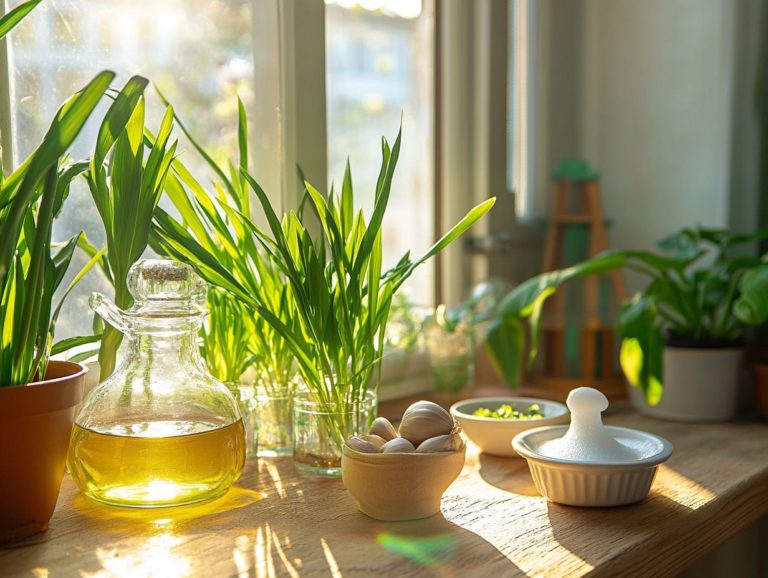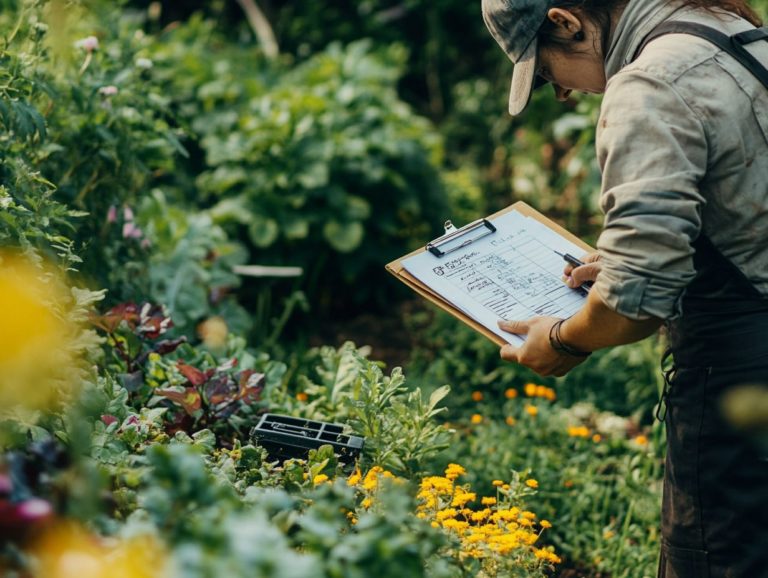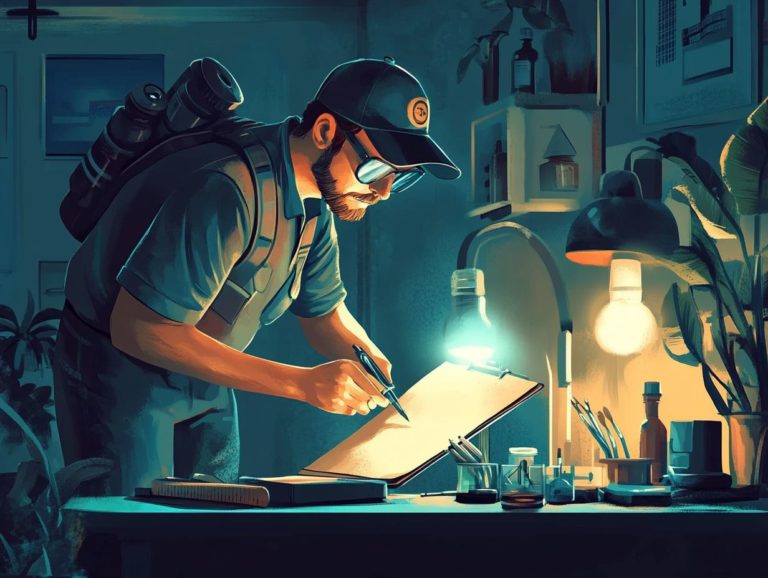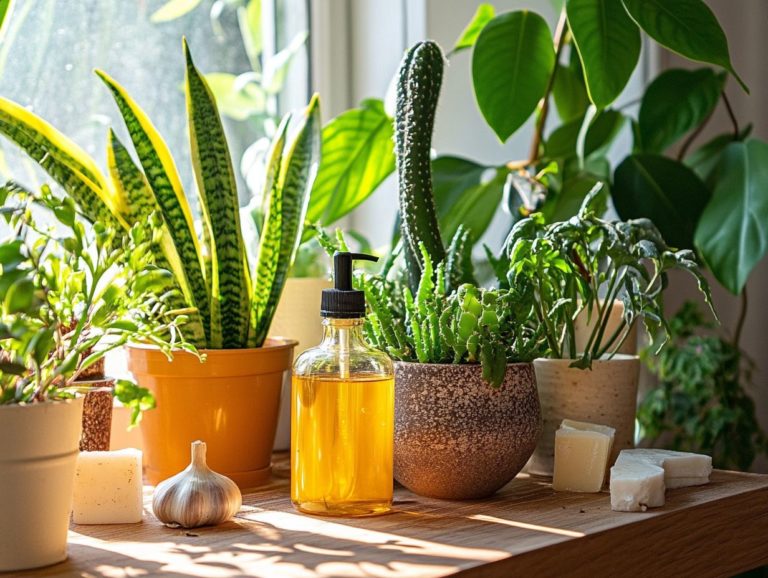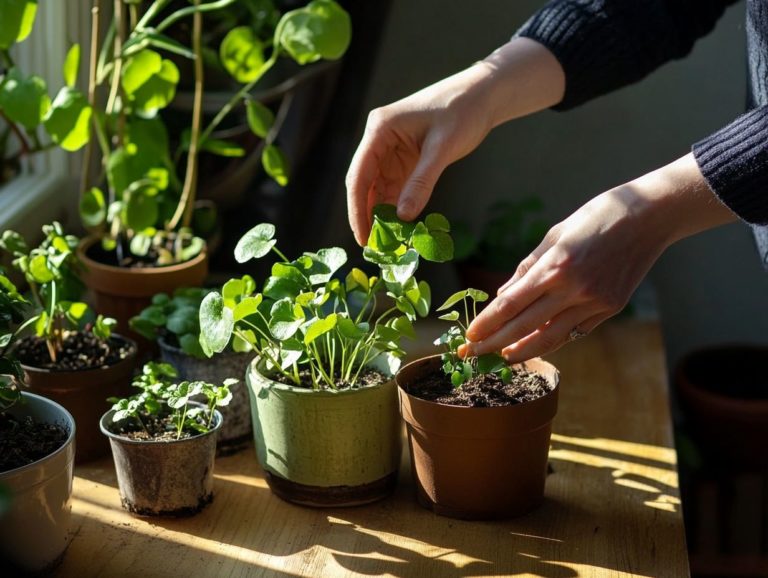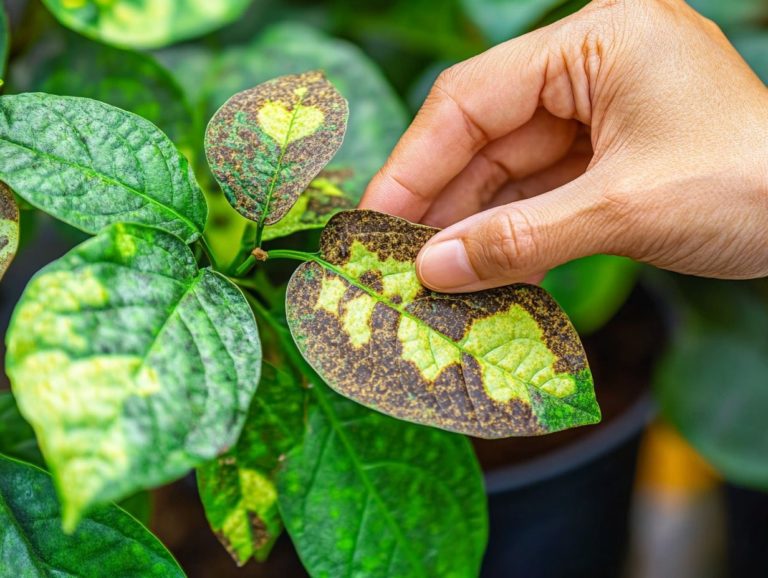How to Keep Your Indoor Garden Healthy and Pest-Free
Indoor gardening presents a unique opportunity for you to blend beauty and tranquility. Enjoy the rewarding experience of nurturing plants right in the comfort of your home.
Establishing and maintaining a flourishing indoor garden offers many benefits and challenges. Get ready to discover essential tips that will transform your indoor garden!
This guide provides crucial insights on selecting the perfect plants, ensuring they receive the right amount of light and water, and managing temperature and humidity levels.
It also tackles the common issue of pests. You’ll find strategies for identification, prevention, and effective control to keep your indoor oasis thriving.
Uncover the secrets to cultivating a healthy, pest-free indoor garden that enhances your living space!
Contents
- Key Takeaways:
- Benefits and Challenges of Indoor Gardening
- Creating a Healthy Environment for Your Indoor Garden
- Identifying and Preventing Common Pests
- Maintaining a Pest-Free Indoor Garden
- Frequently Asked Questions
- How can I keep my indoor garden healthy and pest-free?
- What are some natural ways to prevent pests in my indoor garden?
- How do I get rid of pests if they have already infested my indoor garden?
- What are some common pests that can affect indoor gardens?
- How often should I inspect my indoor garden for pests?
- Are there any preventative measures I can take to keep pests away from my indoor garden?
Key Takeaways:
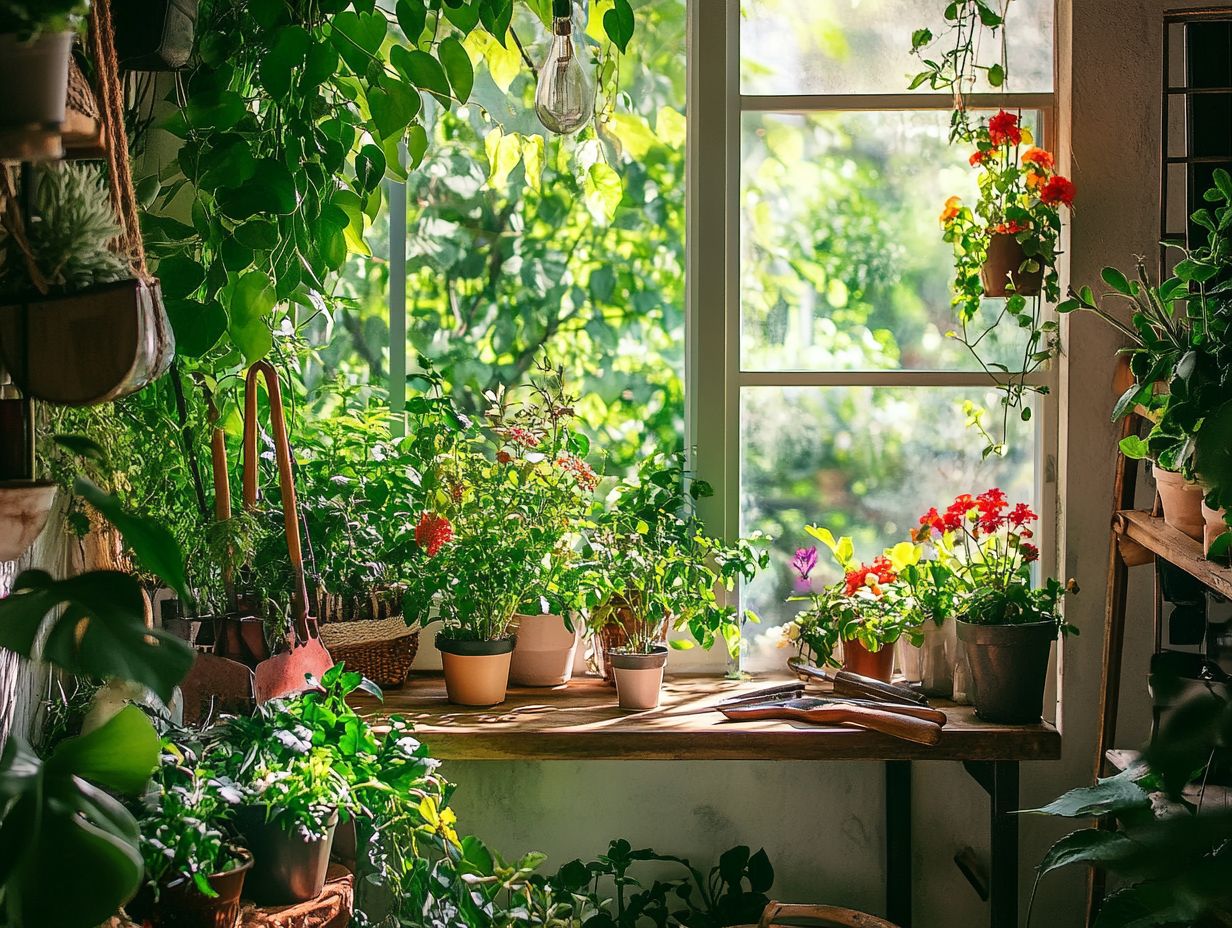
- Select plants that thrive indoors to keep pests away!
- Maintain a healthy environment with proper lighting, the right amount of water, and temperature control to keep your indoor garden pest-free.
- Regularly inspect your garden and use natural pest control methods to prevent and manage infestations effectively.
Benefits and Challenges of Indoor Gardening
Indoor gardening brings numerous benefits, from improving air quality to providing fresh herbs for your cooking. It also cultivates a tranquil atmosphere in your home.
However, it comes with its own set of challenges. You may encounter common indoor pests like aphids, spider mites, and mealybugs.
Proper maintenance is essential. Managing the necessary gardening equipment can also require your attention.
Nurturing your plants brings joy. However, pest infestations and treatment options can complicate the experience.
Recognizing both the benefits and potential hurdles is vital for anyone aspiring to embrace indoor gardening fully.
Creating a Healthy Environment for Your Indoor Garden
Establishing a healthy environment for your indoor garden is crucial for the flourishing and longevity of your plants. Concentrate on key elements like sufficient lighting, the right amount of water, and precise control of temperature and humidity.
These factors work together to keep your plants healthy and can significantly impact the likelihood of common indoor pests. Proper air circulation is crucial to prevent damp conditions that may invite pest infestations and diseases.
By creating this perfect setting, you enable your plants to thrive beautifully.
Choosing the Right Plants
Choosing the right plants for your indoor gardening project is crucial for cultivating a flourishing home garden. Certain plants are naturally more resilient against common indoor pests and environmental stressors.
By understanding the specific needs of each plant type like a Monstera or herbs like basil and rosemary you can enhance your plant inspection practices and implement effective pest prevention methods.
This knowledge helps you make informed decisions, ensuring your indoor oasis remains vibrant and free from pest issues. When selecting plants, consider factors like light requirements, humidity levels, and watering schedules.
These elements greatly influence their compatibility with one another. Companion planting can also be a game-changer; for instance, aromatic herbs can deter pests when grown alongside more vulnerable plants.
Opting for varieties known for their resistance to nuisances like spider mites or aphids can significantly lighten your maintenance load. Researching sturdy plants, such as snake plants or pothos, helps you create a thriving indoor environment that requires minimal care and faces fewer pest challenges.
Providing Adequate Lighting and Watering
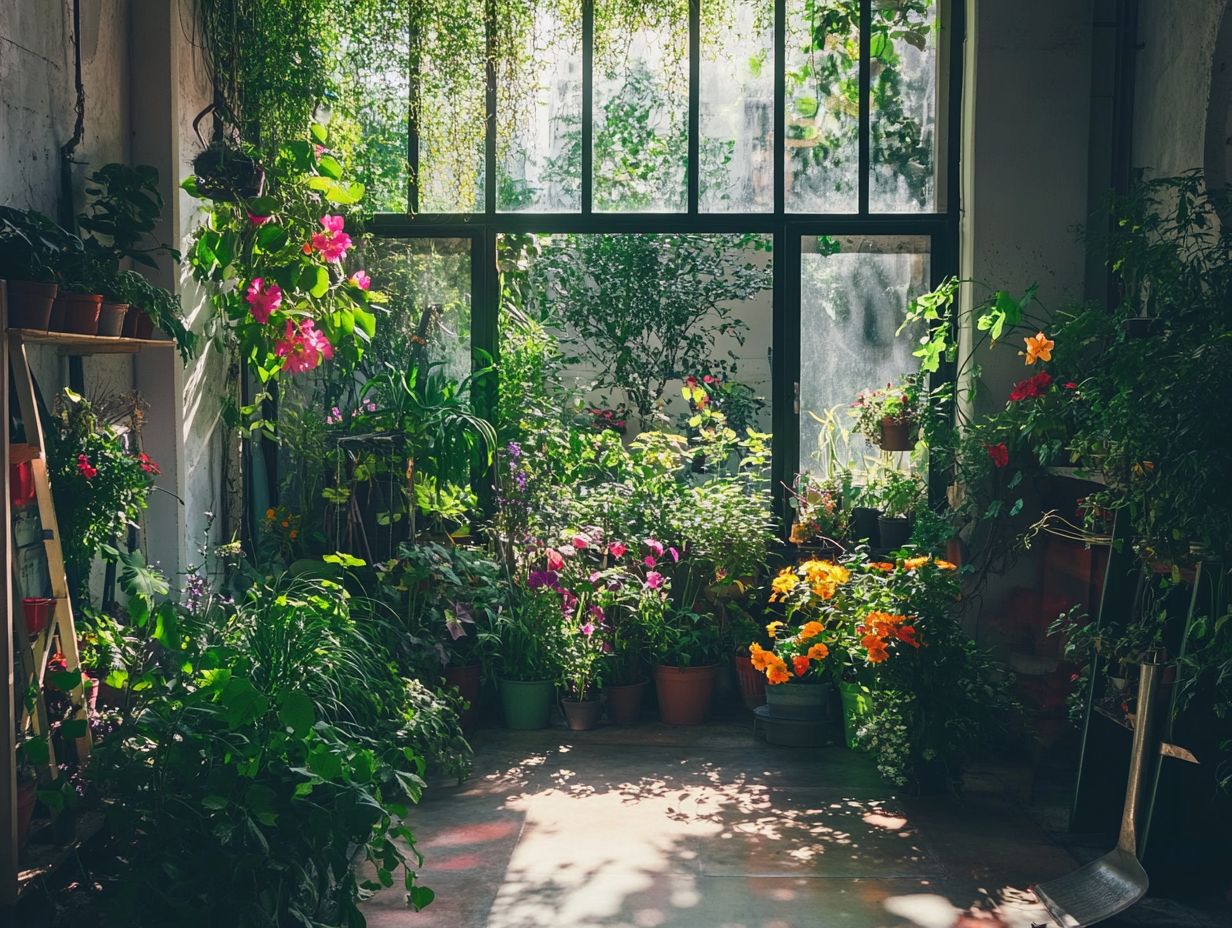
Good lighting and watering are essential for indoor gardening. They directly affect your plants’ health and can also attract pests.
Ensure your plants get the right amount of light. This can come from natural sunlight or high-quality artificial grow lights.
Consider using LED lights for your plants. They are energy-efficient and provide the right light spectrum.
Set a consistent watering schedule based on each plant s needs. Some plants prefer drier conditions, while others like moist soil.
This knowledge promotes healthier growth. It also reduces the risk of pests like aphids and spider mites.
Controlling Temperature and Humidity
Maintaining the right temperature and humidity is vital for your indoor garden. Fluctuations can lead to pest problems.
Keep temperatures between 65-75 F and humidity at 40-60%. These conditions support healthy growth and deter pests.
Check your thermometers and hygrometers regularly. Use pebble trays or humidifiers to adjust humidity levels.
Monitoring these conditions helps prevent unwanted pests. This ensures your indoor garden thrives.
Identifying and Preventing Common Pests
Recognizing and preventing common pests is key to your indoor garden’s health. Quick action can stop infestations from escalating.
Know the common pests like aphids, mealybugs, and spider mites. This knowledge helps you take preventive measures early.
Watch for early signs of infestation. This allows you to choose the right treatment, whether natural or chemical.
Types of Pests and Their Impact on Plants
Pests like aphids, spider mites, and mealybugs threaten your indoor plants. Each pest affects plants differently.
These pests drain your plants’ energy and introduce diseases. For example, aphids can lead to curled leaves, hindering photosynthesis.
Spider mites thrive in dry conditions and leave spots on leaves. This weakens plants and makes them vulnerable to other diseases.
Knowing how these pests behave helps you tackle them effectively. This keeps your plants healthy and vibrant.
Natural Pest Control Methods
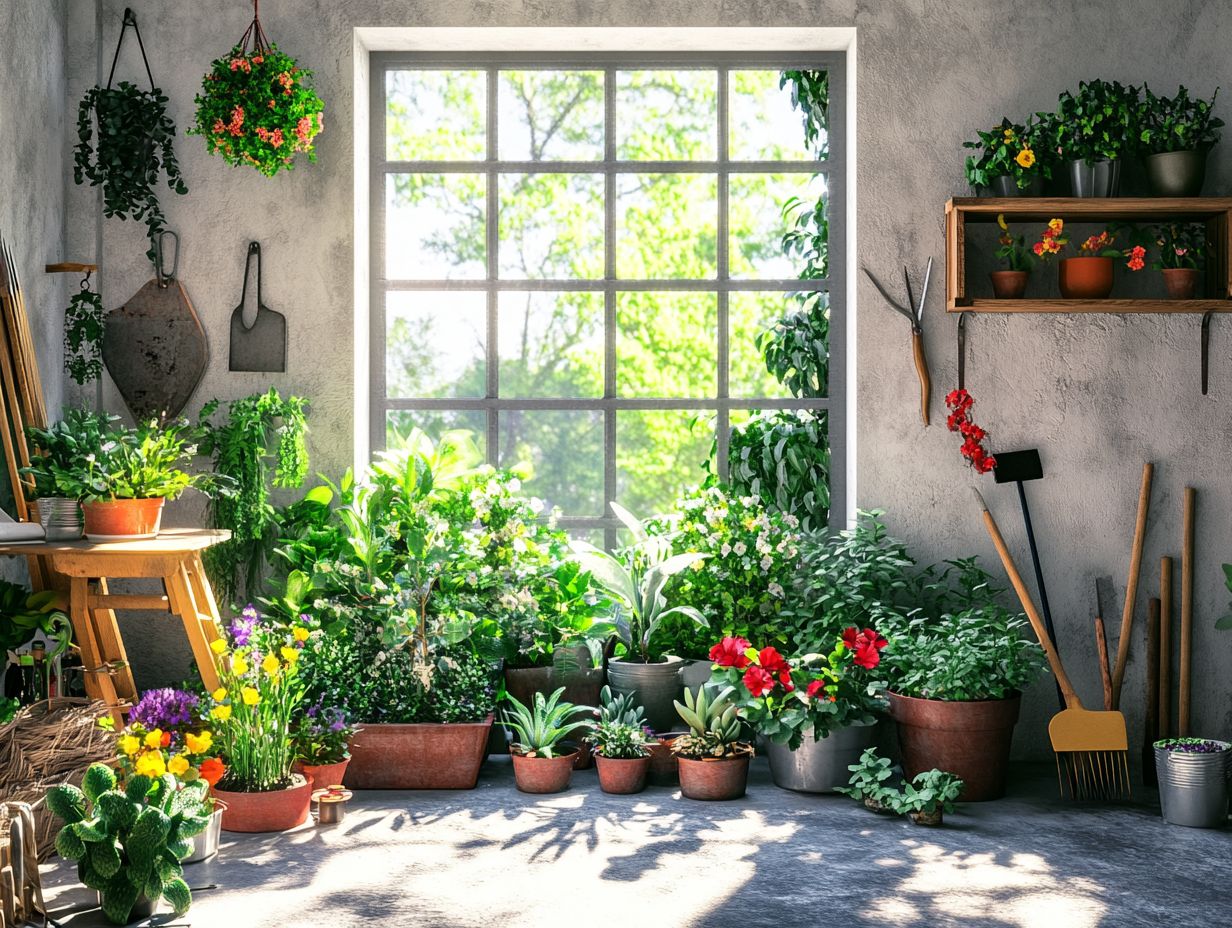
Natural pest control methods offer eco-friendly solutions. They help address common indoor gardening challenges.
One standout option is neem oil. Extracted from the seeds of the neem tree, it is renowned for combating various pests, including aphids and spider mites. By implementing these natural alternatives, you not only safeguard your plants but also cultivate a healthier indoor environment. Additionally, for comprehensive strategies, consider preventing pest infestations in indoor plants.
Consider other organic solutions, such as diatomaceous earth. You can sprinkle it around your plants to deter crawling insects by damaging their exoskeletons. Insecticidal soaps soaps that kill insects also present a viable option, effectively suffocating soft-bodied pests on contact.
Creating a welcoming habitat for beneficial insects, like ladybugs and lacewings, can enhance your pest control efforts even further.
Make it a routine to check your plants often. This simple step can save your garden! Regularly inspect your plants and remove any affected foliage. This practice helps maintain a balanced ecosystem, ensuring that your indoor garden remains lush and thriving, unbothered by unwanted pests. Additionally, learning how to maintain soil health for indoor plants is crucial for long-term success.
Maintaining a Pest-Free Indoor Garden
Maintaining a pest-free indoor garden demands your diligence. Regular inspections can help you identify potential issues before they develop into serious problems.
By routinely checking for signs of common indoor pests, like aphids and spider mites, you can take swift action to mitigate any infestations.
Using effective pest control methods like natural solutions or specific chemicals will improve your indoor plants health and productivity. This will help you treat indoor pests effectively.
Regular Inspections and Maintenance
Regular inspections and maintenance are essential for cultivating a thriving indoor garden. They enable you to spot pest issues before they spiral out of control.
By conducting plant inspections, you can assess the health of your greenery. Catching early signs of common pests like aphids, fungus gnats, or mealybugs can save your garden.
Equipping yourself with the right gardening tools think gardening equipment like magnifying glasses or moisture meters can elevate your inspections and help keep your indoor garden in peak condition.
Routine care transcends mere aesthetics; it s a vital strategy for pest prevention methods. Using tools like pruning shears to snip away dead leaves or applying insecticidal soap sprays can effectively manage pest populations.
Establishing a schedule for these inspections will aid in preserving soil health and moisture levels. This makes it less inviting for pests.
Start a proactive gardening approach today! Catching issues early can save your plants. Explore natural treatment options and chemical treatment options to address any emerging problems.
By following these steps, you can enjoy a vibrant, pest-free indoor garden!
Effective Pest Control Strategies
Implementing effective pest control strategies is essential for maintaining a vibrant indoor garden. There are various treatment options tailored to suit your specific needs, such as neem oil for organic pest management.
As a garden enthusiast, it’s important to weigh the implications of your choices. Each method comes with its own set of advantages and drawbacks. For example, natural solutions typically use ingredients derived from plants or minerals, including neem oil. These methods are less harmful to beneficial insects and the environment, making them perfect for those who prioritize eco-friendliness.
Conversely, chemical treatments can deliver faster and more aggressive results, especially when tackling stubborn pests like aphids or spider mites. However, misusing these products can result in resistance issues or negatively affect the surrounding flora and fauna.
To enhance effectiveness and minimize risks, it’s wise to adopt best practices. Rotate pest control methods, apply treatments under optimal weather conditions, and adhere strictly to label instructions. Additionally, learn how to water your indoor garden correctly to strike a harmonious balance between natural and chemical approaches, allowing you to cultivate an ideal ecosystem within your indoor garden.
Don’t miss our video on effective pest control strategies watch now!
Frequently Asked Questions
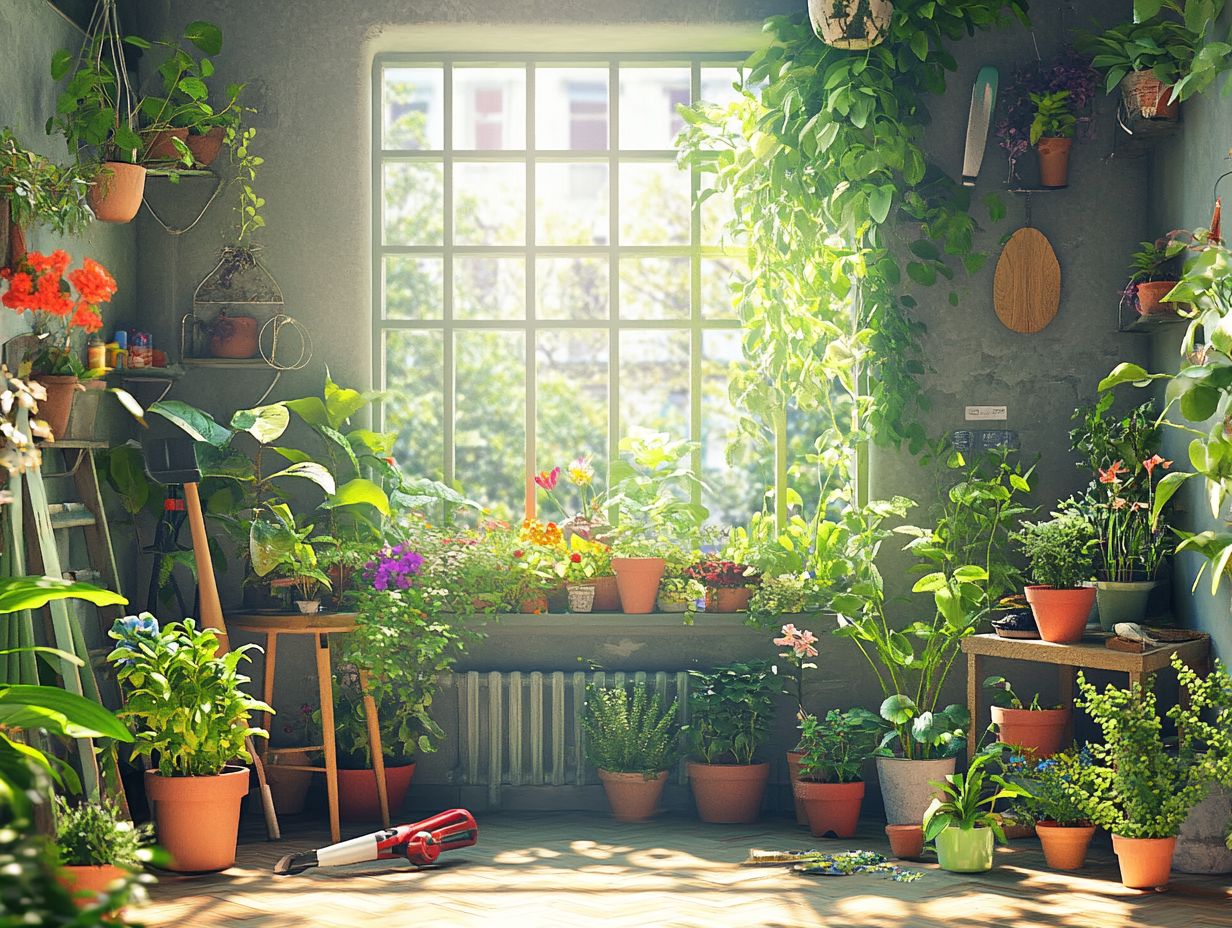
How can I keep my indoor garden healthy and pest-free?
To keep your indoor garden healthy and pest-free, regularly inspect and clean your plants. Remove any dead or decaying leaves and debris, as they can attract pests. Moreover, provide your plants with proper lighting, watering, and fertilizing according to their specific needs.
What are some natural ways to prevent pests in my indoor garden?
One natural way to prevent pests is to introduce beneficial insects, such as ladybugs or lacewings. These insects feed on common garden pests. You can also create a DIY insecticidal soap a soap mixture used to control pests without harming plants using water, dish soap, and vegetable oil.
How do I get rid of pests if they have already infested my indoor garden?
If your indoor garden is already infested, there are a few options to get rid of pests. Use natural methods, such as introducing predators or using insecticidal soap. Alternatively, you can opt for commercial pest control products. Follow the instructions carefully, and use these products with caution!
What are some common pests that can affect indoor gardens?
Common pests include aphids, fungus gnats, mealybugs, and spider mites. These pests can damage your plants by feeding on them and spreading diseases. Regularly check your plants for signs of pests and take action if necessary.
How often should I inspect my indoor garden for pests?
Inspect your indoor garden for pests at least once a week. If you notice any signs of pests, such as holes in leaves or wilting plants, increase your inspection frequency. Catching pest infestations early can prevent them from spreading and causing serious damage!
Are there any preventative measures I can take to keep pests away from my indoor garden?
Yes! There are several preventative measures you can take. Keep your plants clean and healthy, use natural pest control methods, regularly monitor for pests, and avoid overwatering and over-fertilizing your plants. Quarantine new plants before adding them to your garden to prevent the spread of pests.

